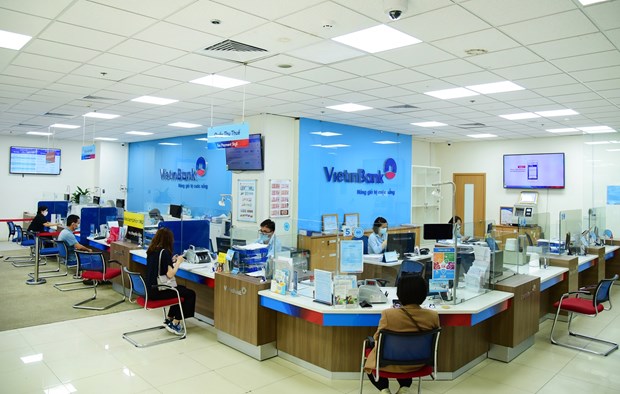 Economy
Economy


|
| A VietinBank office in Hà Nội. The valuation ratio of the Vietnamese banking industry will become more attractive as banks continually increase charter capital. VNA/VNS Photo |
HÀ NỘI — The valuation of the Vietnamese banking industry is relatively high compared to other regional countries, according to Military Bank Securities Company (MBS).
News portal cafef.vn quoted a report on the banking industry released recently by MBS, showing that the price to earnings ratio (P/E) of the Vietnamese banking industry by the end of last month was 13.02, significantly higher than other regional countries, such as Indonesia (11.9), Singapore (11.8), Thailand (9.3), China (4.7) and South Korea (3.9).
The price to book value ratio (P/B) of the Vietnamese banking industry is also considerably higher than the P/B of the countries listed by MBS, at 2.26 compared with 0.90 of Indonesia, 1.10 of Singapore, 0.70 of Thailand, 0.40 of China and 0.40 of South Korea.
With positive news about the charter capital increase of Vietnamese banks, MBS believes the valuation ratio of the Vietnamese banking industry will become more attractive.
According to MBS, in addition to promoting products and services, the capital increase will also help banks enhance strength and competitiveness besides better risk management.
By the end of last year, the Vietnamese banking system was supplemented with more than VNĐ33 trillion of charter capital, helping the country have 18 banks recording charter capital of more than VNĐ10 trillion each.
Many banks have continued big plans to increase capital this year. VietinBank is currently the leader in terms of charter capital with VNĐ48.05 trillion, followed by BIDV, Vietcombank, Techcombank and Agribank.
According to MBS, with the State Bank of Việt Nam (SBV)’s requirement on the capital adequacy ratio (CAR), domestic commercial banks will have to continuously take measures to increase their charter capital next year. Under the SBV’s regulation, by January 1, 2023, banks’ CAR must meet the Basel II standards prescribed in Circular 41/2016/TT-NHNN. Up to now, 16 out of 35 banks have met the CAR requirements according to Circular 41.
Besides meeting the SBV’s CAR requirement, the capital hike will also contribute to strengthening the financial capacity for banks and increasing banks’ medium- and long-term capital to expand business operations when the ratio of short-term funds used for medium- and long-term loans is also tightened by the SBV.
Therefore, MBS forecast the race to increase capital of banks will continue strongly in 2022 to help banks further expand their business operations, enhance governance and financial capacity, improve asset quality and increase profitability in association with risk management.
Related to lending, as credit demand is increasing after the economy reopened in the last quarter of 2021, MBS expected the banking industry to achieve a credit growth of about 13 per cent in 2021, equivalent to the growth rates in the previous years. — VNS




